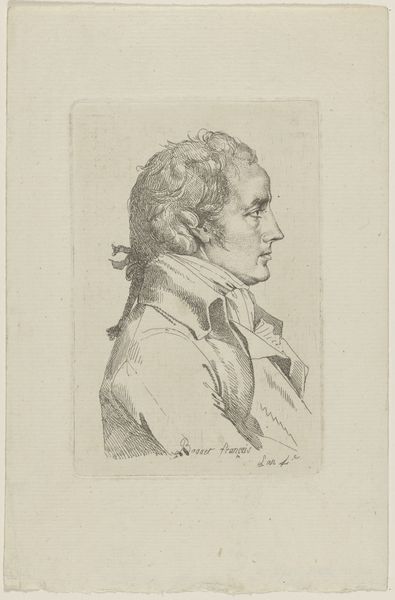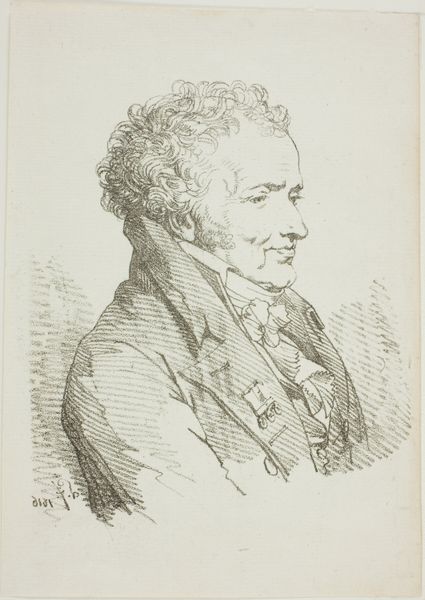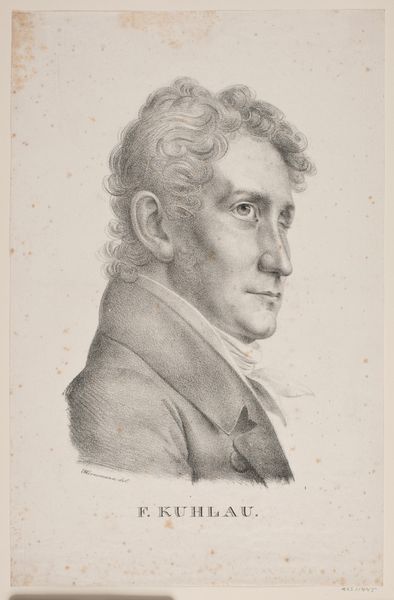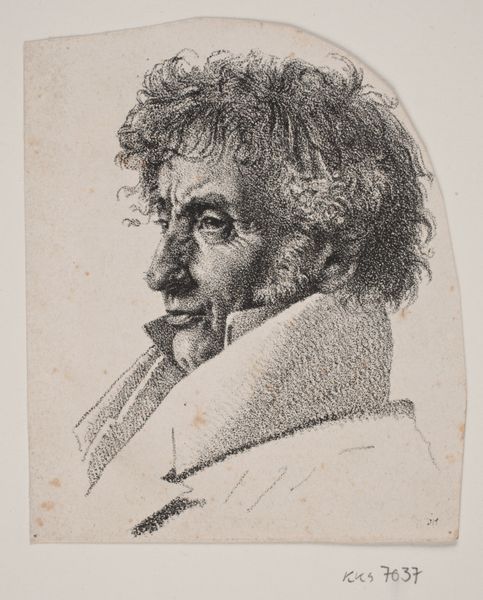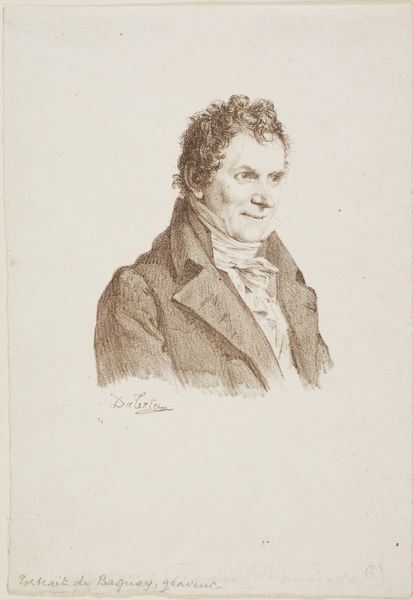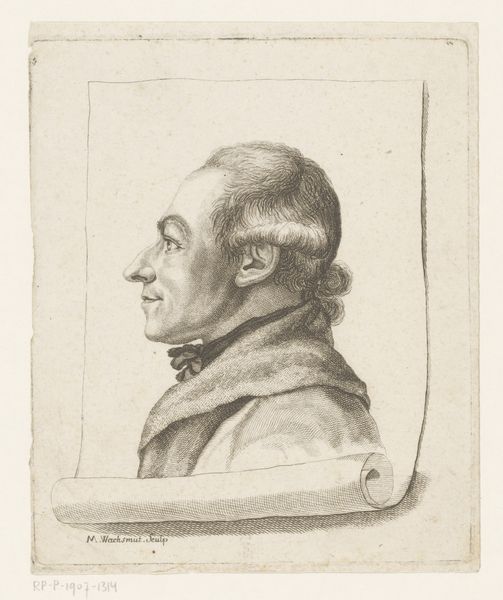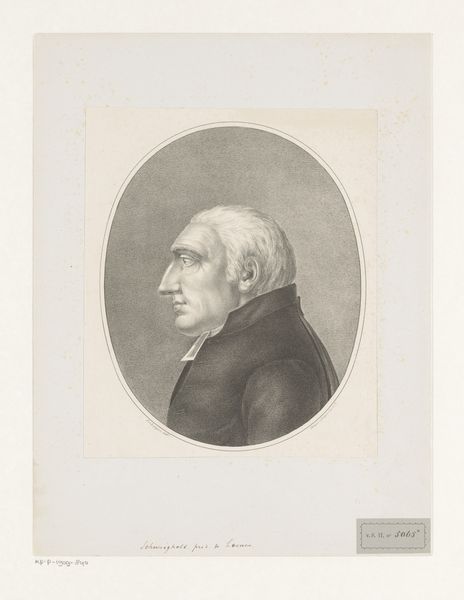
drawing, pencil, graphite
#
portrait
#
drawing
#
neoclacissism
#
pencil drawing
#
pencil
#
graphite
#
portrait drawing
Dimensions: 5 1/16 x 4 9/16 in. (12.86 x 11.59 cm) (image)10 1/4 x 10 7/8 x 3/8 in. (26.04 x 27.62 x 0.95 cm) (outer frame)
Copyright: Public Domain
Editor: Here we have Nicolas André Monsiau's "Portrait of Houdon," a pencil drawing from the early 1800s, housed here at the Minneapolis Institute of Art. It strikes me as incredibly detailed, especially considering the medium. What immediately jumps out at you when you observe this drawing? Curator: Formally, I’m intrigued by the artist's mastery of line. Observe how Monsiau uses a varied, almost frenetic, application of graphite to construct form and texture. Notice the meticulous rendering of Houdon’s hair, contrasted with the softer, more suggestive treatment of his jacket. Editor: Yes, I see that now. The hair really does seem to burst forth, doesn't it? How does the contrast of these areas influence the reading of the work as a whole? Curator: The deliberate juxtaposition invites the viewer to consider the relationship between precision and ambiguity, detail and suggestion. It’s a push and pull that animates the entire composition. Note how the tight network of lines defines the facial features and the gaze, anchoring the subject. Editor: The layering is something to behold. The shadowing gives depth and character. Did the neoclassical portrait drawings like these influence contemporary art practices? Curator: The emphasis on line and form certainly laid a foundation. Neoclassical artists like Monsiau explored notions of ideal beauty through restrained aesthetics, paving the way for later movements to embrace or reject these conventions. Think of Ingres. Consider the formal strategies inherited and subverted throughout art history. Editor: It is amazing to see the detail and emotion conveyed. This close analysis highlights techniques and strategies I never would have noticed! Curator: Precisely! Form speaks. Through considered observation, the subtle choices embedded within an artwork become incredibly vocal.
Comments
minneapolisinstituteofart about 2 years ago
⋮
Monsiau was a distinguished painter of religious, historical and modern themes as well as a prolific illustrator of books. He became a member of the Royal Academy in 1789 and exhibited his paintings and drawings at the biennial Paris Salons from 1787 until 1833. The subject of Monsiau's portait drawing is Jean-Antoine Houdon (1754-1828), himself a renowned portraitist, who executed sculptures of King Louis XV, Empress Catherine II of Russian, Napoleon, Voltaire, and Benjamin Franklin. Monsiau put this likeness of Houdon to use in his celebrated group portrait "The Comitia at Lyon" (1808, Versailles), which depict an Italian delegation voting to elect Napoleon as president of the Cisalpine Republic in Italy in 1802. As Monsiau was commissioned to execute the painting years after the assembly, he inserted portraits of artists and writers in his circle in France. The painting was exhibited at the 1808 Salon.
Join the conversation
Join millions of artists and users on Artera today and experience the ultimate creative platform.
